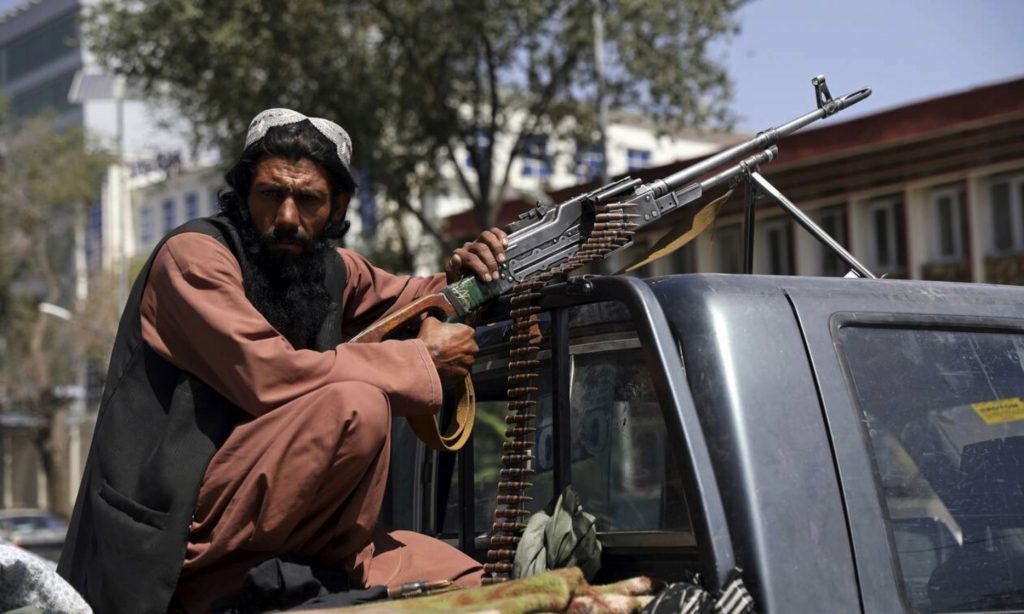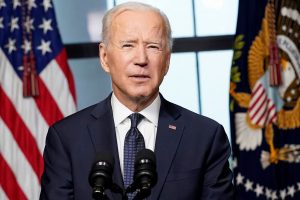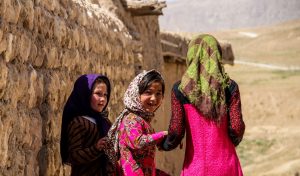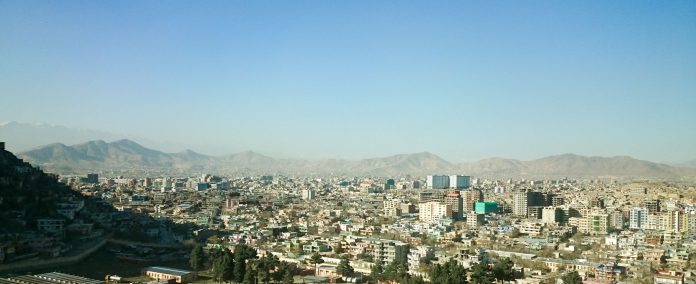Afghanistan is sometimes called the “Graveyard of Empires”. In brief, Afghans don’t like armed foreigners in their country. The British learnt this in the 19th century and the Soviets in the late 20th.
The rapid collapse of the internationally recognised Afghan government appears to have caught everyone by surprise – the Taliban included – but the United States-led war over the past 20 years is just the latest in a number of failed foreign attempts to control and pacify the region. So, to understand this, we must turn first to history.
Ironically, the roots of the recent conflict are substantially of the US’s own making when it, along with Pakistan and Saudi Arabia, supported the armed groups collectively known as the mujahideen (“those who struggle in the name of God”) against the Soviet Union from 1979 to 1989.
The Soviets invaded Afghanistan in 1979 in support of the local Communist government, which took power in a coup in 1978.
One key policy of the Communists was gender equality, requiring compulsory schooling for both girls and boys. Another was land reform. The former provoked a strong backlash in conservative rural communities, whereas the latter triggered landowners in the countryside.
Despite its progress in literacy, economic reforms and women’s rights, moreover, the Communist government was also extremely repressive and had a penchant for disappearing dissenters.
All of this provoked an armed insurrection. Thousands of volunteer fighters from across the Muslim world flocked to Afghanistan to join the insurgency in defence of Muslim lands.
One of them was a young wealthy Saudi by the name of Osama Bin Laden with ties to the Saudi royal family. It’s alleged that he suffered a near-death experience, attributed his salvation to divine intervention, and then, as we now know, went on to found the worldwide jihadist movement known as al-Qa’ida.
The mujahideen was supported by the US and its allies. This support laid the foundations for the eventual emergence of al-Qa’ida and the Taliban, eventually leading to a spectacular display of what the CIA calls “blowback” on September 11, 2001.
The struggle against the Soviet occupation continued until the USSR’s withdrawal in 1989, which led to a power vacuum and civil war.
By 1992, the capital Kabul was being bombarded from multiple directions by rival warlords. The Taliban – meaning “students” – emerged as a key player in 1994.

Initially, they were welcomed by many for restoring order following years of chaos, civil war and human rights abuses committed by warlords in their battle for power. The Taliban also vowed to fight systemic corruption. By 1998, they controlled the vast majority of Afghanistan.
The group implemented a harsh interpretation of Islamic law including corporal punishment and public executions as stipulated by literalist interpretations of Islamic scripture. Hands were amputated for serious cases of theft; women stoned to death for adultery.
Women were relegated to an inferior, subordinate status.
The Taliban banned TV, music and cinema. They harshly targeted ethnic and religious minorities, notably the Shi’a Hazaras, who they regard as apostates.
Meanwhile, Bin Laden became disillusioned with the Saudi royal family following the stationing of US troops on the Arabian Peninsula – the birthplace of Islam and home of the holy cities of Mecca and Medina – during the Gulf Conflict of 1990-91.
He subsequently went into exile in Sudan. Under intense international pressure, Sudan expelled Bin Laden in 1996, whereupon he returned to Afghanistan and was afforded protection by the Taliban. Here, he established al-Qa’ida training camps from which attacks were launched abroad against the West and “apostate” regimes in the Muslim world.
After the 9/11 attacks in 2001, the US immediately fingered Bin Laden as the culprit and demanded that the Taliban hand him over. The Taliban didn’t refuse absolutely, but demanded proof that Bin Laden was responsible and that the US stop bombing Afghanistan to surrender him to a neutral third country. The Taliban’s seemingly suicidal position was at least in part due to local customs pertaining to the required hospitality that must be shown to guests.
In October 2001, an international US-led military coalition, working in conjunction with local warlords known as the Northern Alliance, quickly disposed of the Taliban government, destroyed al-Qa’ida’s bases, attempted to install democratic governance, and worked to build Afghan security forces. Al-Qa’ida and the Taliban seemed categorically defeated at this juncture, but Bin Laden and Taliban leader Mullah Omar evaded capture, disappearing into the Hindu Kush mountains.

Australian forces followed the US into the fight against the Taliban, with then prime minister John Howard voluntarily invoking the ANZUS security alliance for the first time. In the denouement, some 39,000 Australian soldiers have been deployed to the region since 2001. A total of 41 Australian soldiers were killed, with an additional 261 wounded. More than 500 Australian veterans of the war in Afghanistan have subsequently taken their own lives.
A number of members of the Australian Special Air Services are now under investigation for alleged war crimes. Uruzgan Province, where Australian troops were stationed for nearly a decade before formally withdrawing earlier this year, quickly fell to the Taliban in its lightning offensive, conquering most of the country in recent weeks.
Help keep independent and fair news and opinion coming by subscribing to our free daily news feed. All it requires is your name and email. See SUBSCRIBE at the top of this article
In 2003, the US shifted its focus to Iraq, allowing the Taliban to regroup. In 2009-2010, the US enacted the “surge”, flooding Afghanistan with more than 100,000 troops to counter a resurgent Taliban. This seemed like a success initially, but it now appears that the Taliban were just biding their time to wait the US out.
In 2011, the US located and killed Bin Laden in a compound in the Pakistani city of Ahmadabad.
In early 2020, President Donald Trump signed an agreement stipulating the withdrawal of US troops by the end of May 2021. This agreement sidelined the Afghan government, meaning that while the Taliban largely abided by its commitment not to attack US forces, it did not feel obligated to do so regarding Afghan security forces.
President Joe Biden (pictured below) – who has been a sceptic of the war since his time serving as Vice President to Barak Obama – originally rescheduled the US withdrawal to coincide with the 20th anniversary of the 9/11 attacks. It was subsequently accelerated, encouraging more aggressive Taliban tactics.

The impending withdrawal of overseas troops also prompted the departure of foreign contractors providing logistical support to Afghan security forces, undermining their fighting efficacy. The Afghan air force, for instance, was unable to service its planes, rendering many inoperable, thereby surrendering a key advantage over the Taliban.
Over the past few weeks, most of Afghanistan’s provincial capitals and the capital Kabul – a city of 4.5 million people – have fallen to the Taliban with little resistance, despite US expenditure of some two trillion dollars on the conflict over nearly 20 years.
Afghan security forces were supposed to number some 350,000 members on paper, compared with 85,000 Taliban fighters, and were exponentially better equipped. However, like in Iraq in 2014, it’s probable that many of these didn’t actually exist and officials pocketed the pay from “ghost” soldiers.
The timing of the withdrawal is perplexing. Fighting in Afghanistan is seasonal; it’s too cold in the winter to engage in offensives. As such, it is unclear why the US didn’t wait until later in November or December to withdraw and nix any chance of a Taliban offensive. This may have given the Afghan government time to consolidate following the exit of foreign troops.

At the time of writing, the Taliban are pledging that they are a reformed outfit, promising a full amnesty to those who worked with governmental and foreign forces, and committing to upholding rights for women in accordance with Islamic law. The problem with the latter is that the interpretation of Islamic law is extremely variable – that is how universal religions become successful – so it remains to be seen what this actually means in practice, given their previous track record.
So, the current question, given their effective reconquest of the country, is: have the Taliban reformed or will they revert to their previous style of authoritarian, misogynistic governance?

Dr Tristan Dunning is a lecturer in international relations at the University of the Sunshine Coast and an honorary research fellow in history at the University of Queensland. He has started a new position as an Associate Professor at the American University of Afghanistan. He is the author of Hamas, Jihad and Popular Legitimacy: Reinterpreting Resistance in Palestine and the editor of the volume Palestine: Past and Present. He has also published research papers for Terrorism and Political Violence, Small Wars and Insurgencies, Critical Studies on Terrorism, and the Australian Parliamentary Library. Follow him on Twitter: @trisdunning





